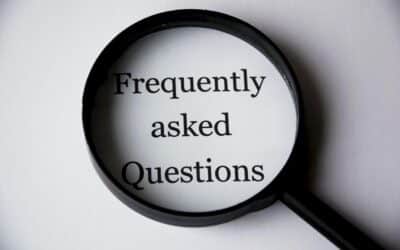It doesn’t take much these days to lose a visitor online. If your website takes too long to load, most people won’t wait around for it. A slow site affects more than just your bounce rate. It leaves a bad first impression and makes people less likely to stick around, explore what you offer, or come back later.
Speed isn’t just about user experience, it matters big time for your rankings too. Search engines want to give users the best results, and site performance factors into that. If your pages load like molasses, search engines take note. Knowing what can slow you down and fixing those problems is key to getting better results from search engine optimization in Tulsa.
Common Causes Of Slow Website Speed
Page speed issues can come from multiple places, and a lot of them are easier to miss than you’d think. Even something small, like one oversized image, can drag an entire page down.
Here are a few of the most common reasons your site might be falling behind:
1. Large, uncompressed images. A beautiful photo is great, but it shouldn’t take ages to load. Images that aren’t resized or compressed can eat up too much bandwidth and increase load times.
2. Too many ads or media embeds. Pop-ups, video players, and third-party ad scripts all take time to load. When overused, they bog everything down.
3. Clunky code and unused scripts. Websites carry a lot under the hood, including JavaScript, CSS, and tracking tools. If those elements aren’t cleaned up regularly, they build up and create lag.
4. Weak hosting setup. Your hosting provider and server location make a difference. If your plan lacks resources or is shared with too many others, your site performance can slow down no matter what you do.
Let’s take a real-world example. Say you run a shop in Tulsa and your homepage is loaded with large image banners that haven’t been optimized. It looks great, but it takes forever to load on mobile. This setup may frustrate local customers, and search engines will see that frustration reflected in bounce rates. Faster-loading competitors could easily outrank you because people don’t want to wait.
Knowing these trouble spots can help you spot what needs fixing. Whether it’s tweaking image sizes, removing that autoplay video, or switching to better hosting, a faster site often starts with small changes that make a big difference.
How Slow Website Speed Affects SEO Rankings
When your site drags, it doesn’t just make people impatient. It signals to search engines that your experience might not be up to par. The longer it takes for a page to load, the more likely it is that someone will hit the back button and go elsewhere. That bounce can bring your search performance down quickly.
Here’s how speed issues can directly hurt your optimization:
1. People leave before your content even loads, which increases bounce rate.
2. Pages that load slowly on mobile get flagged as low performing.
3. Delays make users interact less with your site, like clicking fewer links or abandoning forms.
Search engines are paying attention when this happens. If your pages aren’t fast enough, your position in the rankings might slowly drop. Over time, you’ll notice fewer visitors, fewer leads, and less engagement. Speed is directly tied to how well your optimization efforts pay off, especially when trying to stand out in a local area like Tulsa.
Keeping your visitors happy with a quick-loading site doesn’t just keep them around. It helps you stay visible where it matters, when people are searching for what you offer. The longer your site drags its feet, the more opportunities you’re missing out on. Speed really does set the pace for how your online content performs.
Diagnosing And Fixing Speed Issues
If your site’s been running slow, figuring out why doesn’t have to involve guesswork. There are a few tools that can give you a clear picture of what’s going wrong. Google’s PageSpeed Insights is a good place to start. It will show you what’s slowing things down, whether that’s massive images, unused code, or long server response times. Once you’ve got that list, you can start knocking out the problems one by one.
To get your site loading faster, focus on the things that weigh it down most:
1. Compress large images before uploading them. Tools like TinyPNG or built-in features on your website builder can shrink image files without losing quality.
2. Cut back on automatic videos, oversized banners, and ad-heavy layouts. Too many media elements can choke your loading speed.
3. Clean up your code. If you’ve had design or development updates over the years, your site might be carrying scripts and rules it doesn’t need anymore.
4. Choose a trustworthy web host. Shared hosting plans can slow things down, especially during high-traffic times. Upgrading to a better hosting plan or switching to a faster server can take the pressure off.
Say your contact page loads slowly because of an embedded map and form plugin. That combo can drag down load speed, especially on phones. Removing the map or finding a faster-loading alternative can take a few seconds off the page load time. Multiply that across your whole site, and the difference is easy to feel.
Benefits Of Improving Website Speed
Speed isn’t just about impressing search engines. Creating a fast, smooth experience tends to make people trust your business more. Nobody likes waiting for pages to load or fighting through delays when they’re trying to look at your products or services. When people can get where they want to go quickly, they’re more likely to hang around, click through your site, and take action.
You’ll likely see these payoffs after speeding up your site:
1. More page views per visit, since users can navigate faster.
2. Higher conversions, whether that’s signing up, booking, or buying.
3. Lower bounce rates as people find what they need without delay.
Search engines reward websites that treat users well. A faster online experience usually means longer session times, more clicks, and more engagement. All those things signal to search engines that your site deserves to climb rankings. And it’s a competitive advantage that keeps on giving.
The better your site works, the easier it is for people to connect with your content. It builds a smoother path from interest to action, whether that’s submitting a contact form, making a call, or placing an order.
Keeping Your Website Fast And Efficient
Once your site is running smoothly, regular upkeep helps you hold onto that speed. Websites aren’t a set-it-and-forget-it kind of thing. Code can become outdated, image sizes can creep back up, and plugins can break. Setting up a routine helps you catch issues before they become noticeable.
Try checking these off your list every month:
1. Run a speed test to identify new delays.
2. Update plugins, themes, and software to reduce slowdowns.
3. Review image files and compress any new large ones.
4. Trim back any third-party scripts you’re no longer using.
You can also keep a checklist of performance basics to go over any time the site content gets a refresh. For example, after adding a new blog section or feature, check the load time afterward to make sure it didn’t accidentally introduce lag.
Staying current with web development best practices also goes a long way. Trends shift, and what worked fine two years ago might now be outdated. Use lightweight themes, stay away from bulky site builders, and simplify structure where you can.
You don’t need to do everything at once. But the more consistent you are about maintenance, the quicker your site will perform. That kind of reliability will show up in your rankings.
Speed Sets the Tone for Your Online Success
Search engines pay close attention to speed, and so do the people using your website. The longer visitors wait, the faster they bounce. That robs you of engagement, interest, and opportunities to grow.
Improving site speed is one of the simplest ways to help with search engine optimization in Tulsa. It keeps people happy, makes your site easier to use, and puts you in a better spot to show up when customers are looking. Keeping that momentum going with regular checkups can make a difference. Small steps like trimming unused scripts and optimizing images help you stay fast without doing a total redesign.
Speed sets the stage not just for how your website looks, but how well it performs, and that’s worth keeping in shape.
To ensure your website reaches its full potential and connects with more local customers, take a closer look at how search engine optimization in Tulsa can help improve site performance. A faster, smoother site makes it easier for visitors to engage with your content and take the next step. At Tulsa Internet Marketing, we’re ready to help fine-tune your website so it loads quicker, ranks better, and works harder for your business.





